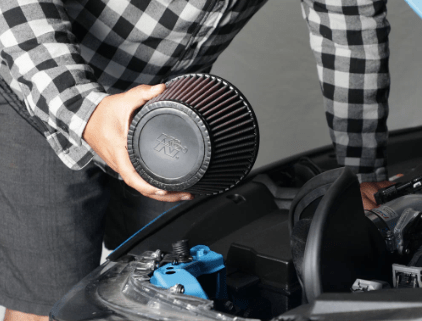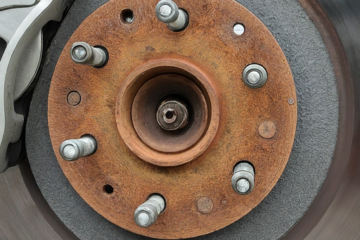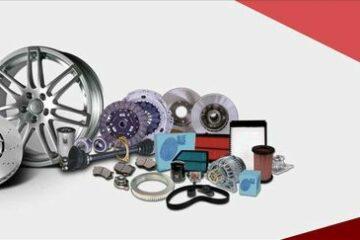In the world of automotive upgrades, cold air intakes have gained significant popularity among car enthusiasts. This comprehensive guide will provide you with all the essential information you need to know about cold air intakes. From understanding their purpose and benefits to installation and maintenance tips, we’ll delve into every aspect to help you make informed decisions for maximizing your vehicle’s performance.
A cold air intake (CAI) is an aftermarket part designed to replace the factory air intake system in a vehicle. It consists of a high-flow air filter and a specially designed intake tube that allows cooler air from outside the engine bay to enter the engine. This colder air is denser and contains more oxygen, which can result in improved combustion and increased horsepower.
In this article, we will discuss the benefits & disadvantages of a cold air intake, how to install one, and some of the considerations you should make before making the purchase.
Pros or Benefits of a Cold Air Intake:
There are several benefits to installing a cold air intake on your vehicle. These include:
- Increased Horsepower: A cold air intake system allows for a greater volume of cooler air to reach the engine, resulting in improved combustion. This increased air supply can lead to a boost in horsepower and torque, providing a noticeable improvement in overall engine performance.
- Enhanced Throttle Response: With a cold air intake, the engine can respond more quickly and efficiently to driver inputs. The improved airflow reduces restrictions and allows for a more immediate acceleration response, giving you a more engaging and spirited driving experience.
- Improved Fuel Efficiency: When the engine receives cooler and denser air, it can achieve a more efficient combustion process. This optimized fuel-air mixture can lead to improved fuel efficiency, helping you save money at the pump and reduce your carbon footprint.
- Better Engine Sound: A cold air intake can enhance the engine sound, producing a deeper and more aggressive tone. This improved auditory experience adds to the overall driving pleasure, especially for automotive enthusiasts who appreciate a sportier engine note.
- Longevity of Engine Components: A cold air intake system can help protect your engine by filtering out contaminants more effectively than the stock air intake. The high-flow air filter captures dirt, dust, and debris, preventing them from entering the engine and causing potential damage. This added protection can contribute to the longevity and durability of your engine components.
- Easy Installation and Maintenance: Cold air intakes are generally designed to be user-friendly and easily installed with basic hand tools. They often come with detailed instructions or can be installed by a professional. Additionally, maintenance typically involves periodic cleaning and re-oiling of the air filter, which can be done without much hassle.
Here are some practical tips for maintaining the performance and longevity of your cold air intake system:
- Clean the filter regularly. The filter is the most important part of the cold air intake system, so it is important to keep it clean. You can clean the filter with a mild soap and water solution, or you can use a special filter cleaner.
- Inspect the intake system for leaks. Leaks can allow hot air into the system, which will reduce the performance of the cold air intake. Inspect the intake system for leaks regularly, and repair any leaks as soon as possible.
- Replace the filter every 12,000 to 15,000 miles. The frequency of filter replacement will depend on the environment in which you drive. If you drive in dusty or dirty conditions, you may need to replace the filter more often.
- Avoid driving through deep water. If you drive through deep water, it is possible for water to enter the cold air intake system. This can cause damage to the engine. If you must drive through deep water, try to keep the intake snorkel as high as possible.
By following these tips, you can help to ensure that your cold air intake system performs well for many years to come.
7. Aesthetic Upgrade: Apart from the performance benefits, a cold air intake can also enhance the visual appeal of your engine bay. Many aftermarket cold air intakes feature attractive designs and high-quality materials, adding a touch of style and customization to your vehicle.
Cons or Drawbacks:
- Potential warranty issues: Some cold air intakes may void your vehicle’s warranty. It is important to check with your vehicle’s manufacturer to see if installing a cold air intake will void your warranty.
- Increased noise levels: A cold air intake can increase the noise level of your engine, especially at high RPMs. This may be a nuisance for some drivers.
- Potential for water ingestion: If the cold air intake is not properly sealed, it is possible for water to be ingested into the engine. This can cause engine damage.
Overall, cold air intakes can be a good way to improve your engine’s performance and fuel economy. However, it is important to weigh the pros and cons before making a decision.
Which cold air intake is right for me?
There are a number of different cold air intakes available on the market, so it is important to choose one that is right for your vehicle and your driving style. Some factors to consider include:
- The type of engine your vehicle has: Some cold air intakes are not compatible with all types of engines. It is important to make sure that the cold air intake you choose is specifically designed for your vehicle’s engine.
- Your driving style: If you do a lot of stop-and-go driving, a cold air intake may not provide as much of an improvement in performance as it would for someone who does a lot of highway driving.
- The climate you live in: If you live in a hot climate, a cold air intake may not be as effective as it would be in a cold climate.
If you are considering installing a cold air intake, I recommend doing your research and talking to a qualified mechanic to get their advice
Remember, the specific benefits may vary depending on the make and model of your vehicle, as well as other modifications or enhancements you have installed. It’s always recommended to research and choose a cold air intake system that is compatible with your vehicle and aligns with your specific performance goals.
Types of Cold Air Intakes
There are two main types of cold air intakes: short ram intakes and full cold air intakes.
- Short ram intakes: Short ram intakes are the most common type of cold air intake. They are relatively inexpensive and easy to install. However, they do not provide as much of an improvement in performance as full cold air intakes.
- Full cold air intakes: Full cold air intakes are more expensive and complex to install than short ram intakes. However, they provide a greater improvement in performance. This is because they draw air from outside the engine bay, where it is cooler and denser.
Considerations Before Installing a Cold Air Intake
There are a few things to consider before installing a cold air intake on your vehicle. These include:
- Your vehicle’s engine: Not all cold air intakes are compatible with all vehicles. It is important to make sure that the cold air intake you choose is specifically designed for your vehicle’s engine.
- Your vehicle’s warranty: Some cold air intakes may void your vehicle’s warranty. It is important to check with your vehicle’s manufacturer to see if installing a cold air intake will void your warranty.
- Your driving style: If you do a lot of stop-and-go driving, a cold air intake may not provide as much of an improvement in performance as it would for someone who does a lot of highway driving.
Installing a Cold Air Intake

Most cold air intakes are relatively easy to install. However, it is important to follow the manufacturer’s instructions carefully. Here are the basic steps involved in installing a cold air intake:
- Remove the old air intake system.
- Install the new cold air intake system.
- Connect the electrical connectors.
- Start the engine and check for leaks.
Here are some additional tips:
- Use the right oil. The oil you use in your engine can affect the performance of your cold air intake. Use a high-quality oil that is designed for your engine type.
- Get regular tune-ups. A regular tune-up can help to keep your engine running smoothly and efficiently, which will also benefit your cold air intake system.
- Drive safely. Avoid aggressive driving, such as hard acceleration and braking. This can put unnecessary stress on your engine and cold air intake system.
Conclusion
A cold air intake is a great way to improve your engine’s performance and fuel economy. However, it is important to do your research and choose a cold air intake that is compatible with your vehicle and will not void your warranty. If you are considering installing a cold air intake, be sure to follow the manufacturer’s instructions carefully.



